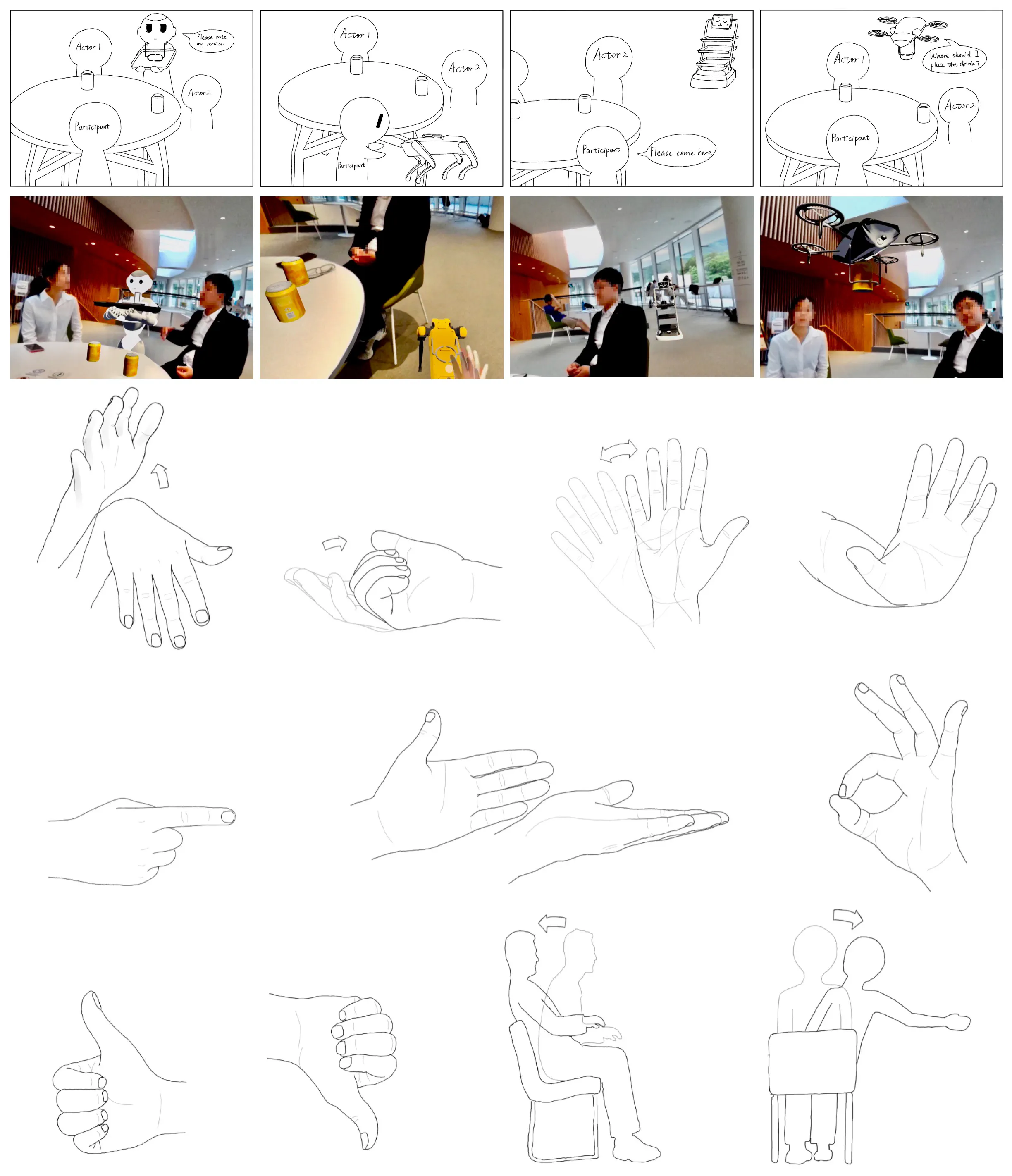Signaling Human Intentions to Service Robots: Understanding the Use of Social Cues during In-Person Conversations
Apr 25, 2025·
 ,
,
,
,
,
,
,
,
,
,
,
,
,
,
Hanfang Lyu
Xiaoyu Wang
Nandi Zhang
Shuai Ma
Qian Zhu
Yuhan Luo
Fugee Tsung
Xiaojuan Ma
 Scratch credit: Xiaoyu Wang
Scratch credit: Xiaoyu Wang
Abstract
As social service robots become commonplace, it is essential for them to effectively interpret human signals, such as verbal, gesture, and eye gaze, when people need to focus on their primary tasks to minimize interruptions and distractions. Toward such a socially acceptable Human-Robot Interaction, we conducted a study ($N = 24$) in an AR-simulated context of a coffee chat. Participants elicited social cues to signal intentions to an anthropomorphic, zoomorphic, grounded technical, or aerial technical robot waiter when they were speakers or listeners. Our findings reveal common patterns of social cues over intentions, the effects of robot morphology on social cue position and conversational role on social cue complexity, and users’ rationale in choosing social cues. We offer insights into understanding social cues concerning perceptions of robots, cognitive load, and social context. Additionally, we discuss design considerations on approaching, social cue recognition, and response strategies for future service robots.
Type
Publication
In CHI Conference on Human Factors in Computing Systems, April 26–May 01, 2025 with Honorable Mention Award